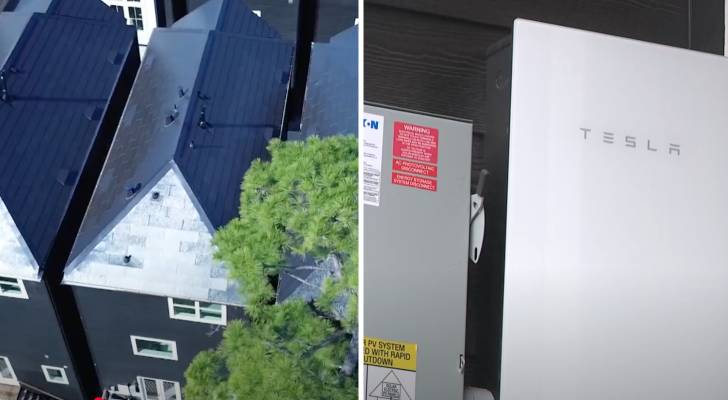Texas police recover 4 stolen GMC trucks from Houston worth $220K linked to VIN cloning ring — what crimes like these can mean for your wallet down the road


Police in Hays County, Texas recently recovered four stolen GMC Denali trucks traced back to Houston valued at more than $220,000. On each of the trucks, the vehicle identification number (VIN) had been “cloned” to dupe unsuspecting buyers. The vehicles were located after an investigation by the Hays County Sheriff’s Auto Theft Unit and other […]
Hundreds of Detroit-area auto workers temporarily laid off by GM and Stellantis amid economic uncertainty — how to protect your finances when you’re furloughed


Across Metro Detroit, hundreds of General Motors and Stellantis auto workers have been temporarily laid off this year. Don’t miss I’m 49 years old and have nothing saved for retirement — what should I do? Don’t panic. Here are 5 of the easiest ways you can catch up (and fast) You’re probably already overpaying for […]
Finance professor bought Nvidia at US$0.48/share — but sold early and missed a life-changing gain of more than 25,000%. Here’s how investors can avoid his mistake 2025


Long-term investing can test even the most disciplined investors. With markets swinging on everything from AI breakthroughs to political headwinds, the temptation to act emotionally — especially during big wins or downturns — is real. Amos Nadler, a behavioural finance expert and former professor at Western University’s Ivey Business School, knows this first-hand. Years ago, […]
‘Worries about the economy and labor market have started to spread’: Americans are anxious about the impact of Trump’s policies — 3 things to do now to protect your finances


Economists, traders and industry leaders are worried about the impact of President Donald Trump’s policies. So it’s no wonder the average American is worried as well. A stock market correction — like the one happening now — might be good for billionaires who see it as a buying opportunity. But for the average American? Not […]
My 83-year-old mother pays her rent on time, but she’s a hoarder — her place is crammed with old newspapers and other garbage. If the condo board finds out, can her housing be taken away?


Laura’s 83-year-old mother is still sharp, stays active and pays her bills on time. But Laura no longer visits because her mother doesn’t want to host anyone in her “messy” condo. The problem is, it’s more than a mess; her mom is a hoarder. Don’t miss I’m 49 years old and have nothing saved for […]
OIder Americans got fleeced online last year, FBI says, losing an average $83,000 to scams. Here’s how to learn from their mistakes


Being robbed doesn’t always happen at gunpoint. Cybercriminals can sneak into your home through your computer and your phone — and may make you an unwitting accomplice to your own robbery. It’s a problem for everyone, but if you’re over 60, you’re particularly vulnerable. Last year, losses to cybercrime increased 33% from 2023 to a […]
Vanguard finds more Americans are treating their 401(k)s like emergency funds — here’s what to consider before making a hardship withdrawal


Life doesn’t always go as planned. Maybe you lost your job or you’re facing uninsured medical expenses. And maybe you’ve already run through your emergency savings. Don’t miss I’m 49 years old and have nothing saved for retirement — what should I do? Don’t panic. Here are 5 of the easiest ways you can catch […]
‘They’ve got you covered’: In outage-prone Houston, Tesla-powered homes promise to keep the lights on — but there are pros and cons to this new technology


A new development of 11 three-story detached townhomes in Houston holds the promise of energy self-sufficiency in a city where power can be unreliable. Each three-bedroom home is equipped with Tesla solar roofs and batteries. Don’t miss I’m 49 years old and have nothing saved for retirement — what should I do? Don’t panic. Here […]
I’m 35 and sunk $95,000 into the S&P 500 in February — then lost $15,000 in the sell-off. My financial advisor wants me to ride it out, but how long should I have to wait?


Mark was nervous about taking the leap and investing in the stock market. As a 35-year-old health-care worker, he’d never had time to learn about the market — but with a lot of money sitting in the bank, he felt it was time to get some professional help and start making his money work for […]
‘Be very wary’: Bank manager saves Ohio couple from losing $17,000 in scam — how to recognize the warning signs of financial fraud


One Ohio couple was nearly tricked out of $17,000 — before a Chase Bank manager in Westlake stepped in and foiled the scammer’s plan. The bank manager became suspicious and alerted police when the couple tried to withdraw the cash to pay for what they thought was a warrant from the Cuyahoga County Sheriff’s Office. […]